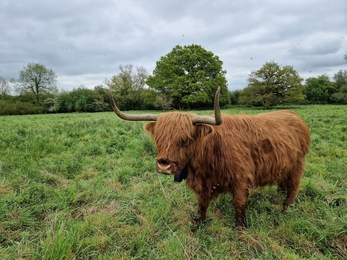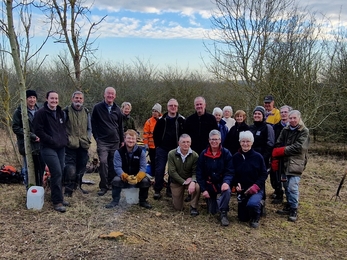Our first point of call, before we even took on the site, was to look at what had already been recorded on site, both by ecological consultants during 2022 and by numerous volunteers historically. We knew the site was very important for birds and supported populations of nightingales and turtle doves, both birds rarely seen elsewhere in the county.
We then set out to conduct as many surveys as possible during the year to work out what was present now. Some surveys were done by our own staff and volunteers and some by, or with the help of, the local natural history organisations including Bedfordshire Natural History Society (BNHS), Bedfordshire Bat Group, Bedfordshire Mammal Group, Bedfordshire Invertebrate Group, Beds and Northants Branch of Butterfly Conservation and numerous county recorders. We have also had national specialists taking an interest in the site with Graeme Lyons conducting a specialist invertebrate survey and the UK Centre for Ecology and Hydrology (UKCEH) using the site as part of a wider study into carbon flux.
Between us all we have looked at communities of birds, bats, reptiles, terrestrial mammals, butterflies and other invertebrates, flora, bryophytes, algae, lichen and general habitats across the site, with more surveys being needed for most groups given the scale of site.
Our volunteers have recorded 50 bird species on site over the past year including 32 nightingale territories, 4 turtle dove territories, a huge number of warblers and other scrub loving birds in the spring Breeding Bird Surveys and several thousand thrushes this winter including large flocks of redwing and fieldfare. Barn owls live and breed on site and raven and woodcock have been recorded dropping by. The more we learn about the bird life the more obvious it is just how important Strawberry Hill is for them.


















